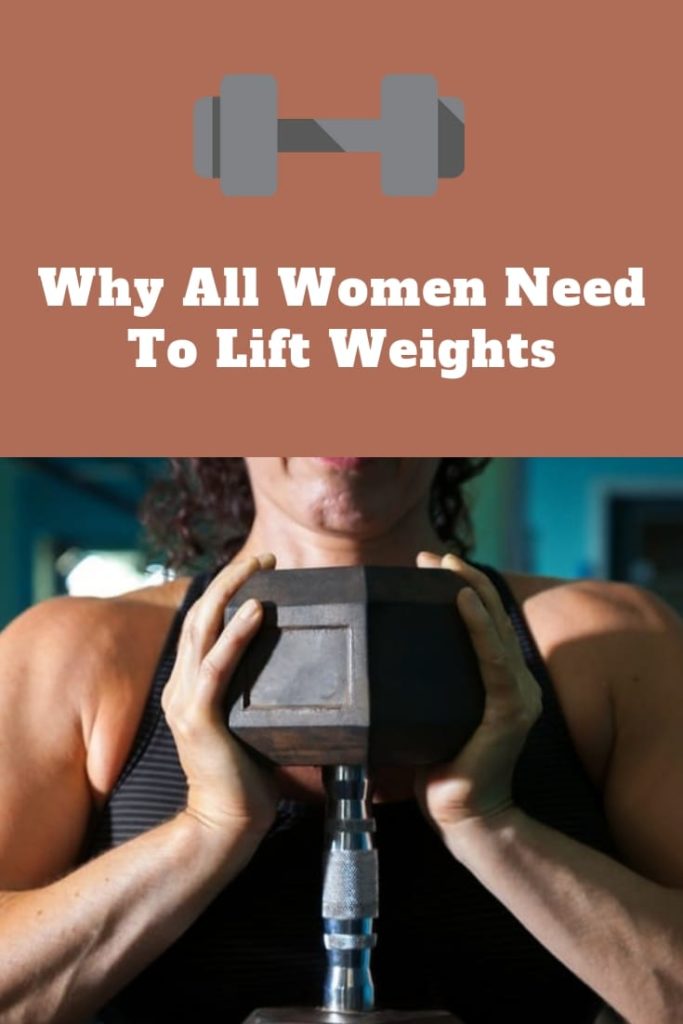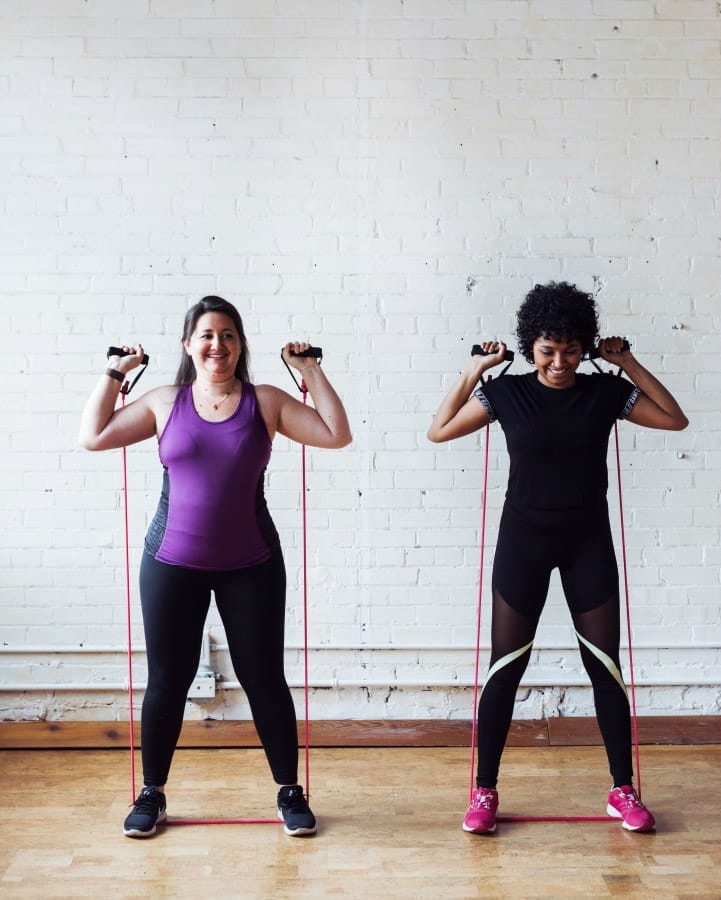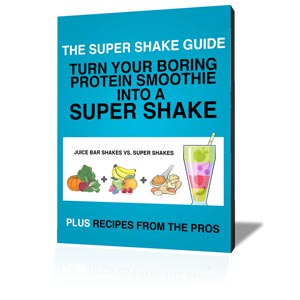Maybe you’ve always had an active life filled with morning swims and weekends tennis dates. Perhaps you’ve even been a casual runner most of your life, logging 10 or 15 miles a week on a semi-regular basis. You feel healthy, but one day you’re surprised to find out all that cardio wasn’t enough.
It could be a bone density scan that says you have the first signs of osteoporosis. Or it might be something more subtle, like needing help to get up off the floor or losing your balance getting off the boat at the lake. Stronger bones and better balance are just two of the reasons why women should lift weights.
It’s not uncommon for women to reach midlife and find out that cardio is not enough to keep them healthy and strong. The good news is it’s never too late to start strength training and bring balance back to your fitness routine.
Physical Activity Guidelines for Americans, the government’s exercise prescription for healthy bodies, has always put too much emphasis on cardiovascular activities. Muscle strengthening is thrown in as an afterthought, with little clarification on what to do and what the “additional health benefits “ are that strength training provides. The reasons why women should lift weights are not clearly articulated.
Lifting weights would be an easier sell if it was clearly stated that strength training helps maintain strong bones, preserve and build muscle mass and maintain your ability to do activities of daily life and stay independent. These details might help women commit to doing their squats in the same way they are committed to getting their steps.
Office challenges and community fitness efforts don’t help. Based on these guidelines, they emphasize step challenges and weight loss. Even though 10,000 steps a day was nothing but a marketing campaign, it is still held up as a goal for everyone to achieve good health.
It also doesn’t help that cardio activities are more accessible and more straightforward than strength training activities. Almost any non-disabled person can go for a walk or hop on a bike. It’s easy to find a fun Zumba class or join in water aerobics. Walking into a gym filled with mysterious machines and grunting guys is intimidating for most women. (Including me. When I started strength training, it was months before I left the “women only” area.)
If you’re new to strength training, following a video or joining in a circuit class can be just as intimidating and perhaps dangerous. If you’ve never learned to do a proper squat being challenged to do as many as you can in one minute with a weight on your back could be a problem. An untrained kettlebell swing could easily lead to a trip to the chiropractor or your primary care doctor.
So what do you do if you’ve never done strength training before?
If you are brand new to strength training, I highly recommend hiring a personal trainer who will assess you, show you basic techniques and create a program that meets you at your current skill and fitness level. The first step to hiring a personal trainer is to make sure they have an NCCA accredited personal training certification. Click here for a list of the top NCCA accredited personal training certifications.(FYI, I hold two NCCA accredited certifications. I am also a ACSM certified personal trainer and an ACE-certified health coach.)
Referrals can also help find the right personal trainer for you. If you belong to a gym already for the pool or kids activities, you can ask if personal training services are available. You may get the surprise of a free session or two with your membership.
A targeted Google search for “personal trainer near me” can also be an excellent way to find the right partner in your fitness journey. Perusing a personal trainer’s website is a safe way to narrow down a short list of potential candidates. You’ll get a feel for their philosophy and training methods as well as their credentials without encountering any kind of hard sell.
You can use your short list to set up a consultation and tour with each candidate. I recommend setting up meetings with more than one personal trainer before you commit to with one. (If there is not a consultation, just show up and workout, this is not the personal trainer for you.) If you’re not sure what to ask at the consultation or what else to look for, read this blog post I wrote with six helpful questions to ask your potential personal trainer.
What if I can’t afford a personal trainer?
I understand that cost can be a factor. When I started working out in college, I didn’t know what a personal trainer was much less have the money to hire one. I will argue that one or two well-planned sessions with a personal trainer can help you get started safely.
A lower cost option would be to consider hiring an online personal trainer. You won’t get the hands-on instruction, but many (including myself) offer online movement assessment and videos you can watch to get your form down. Even online, a personal trainer should do a health and goal assessment before getting started with any kind of programming.
If that is still out of your price range, may I humbly suggest reading “Weight Training for Dummies”? This isn’t a joke; this is the book that got me started. It offers practical and clear instructions on how to safely do the most basic exercises without any kind of diet plan or other fitness advice. Once you understand how to do the basic movements with just your body weight or resistance bands, you can work your way up to working with dumbbells, barbells and cable machines.
Armed with a vocabulary of the basics, you can put together workouts on your own that include the seven basic functional movement patterns: squat, lunge, push, pull, single leg, hinge and rotation. A full body beginner workout with your body and a band that covers all these patterns would look something like this:
- Prisoner squats
- Incline push-ups on knees
- Reverse lunge
- Row with a band under feet (this would be both hinge and pull)
- Single leg balance (work up balancing for 30 seconds)
- Russian Twists (no weight to start)
Once you have mastered basic form, you can add weight for a more challenging version of the exercise or pattern. For example, when you have good prisoner squat form, you can move to a goblet squat with a dumbbell or a kettlebell.
How does nutrition play into building strong bones and maintaining muscle mass?
Your body also needs the right materials to build bone and muscle. When it comes to bone health, the focus is usually on calcium and vitamin D. That approach is out of balance because it forgets to talk about protein. Protein provides the building blocks for all the tissues in the body. If you’ve spent the last two decades eating low-fat breakfast bars and salads for lunch, you may have been robbing your body of vital nutrients. Even the strict calorie restriction that dieting brings can leave your body deficient the essential components of good bone health. Building and maintaining muscle mass and healthy hormone production also require the amino acids found in protein.
It’s not necessary to flip the other direction and forsake veggies for steak. Just make sure you are getting a good source of lean protein at every meal AND not skipping meals. If you’re worried about bone health and supplementing vitamin D, you also need healthy fat in your diet. Vitamin D is fat soluble so, if taken in pill form, it works best when eaten at a meal that contains some fat. Go ahead and eat your egg yolk or put some nuts on your salad.
I’m also surprised that many doctors do not tell their patients with osteoporosis and osteopenia to reduce their soda intake. Phosphoric acid, found in many sodas and some bottled ice teas, may harm bones. Healthy bones need phosphorus but when out of balance with calcium too much can lead to bone loss.
If you spend all of your movement breaks trying to get your heart rate up on the elliptical your doing your body and long term health a disservice. There are so many reasons why women should lift weighs I am sure you can find at least one that matters to you. Don’t be afraid to invest in your good health by finding the right person to help you learn to lift weights safely and correctly.





